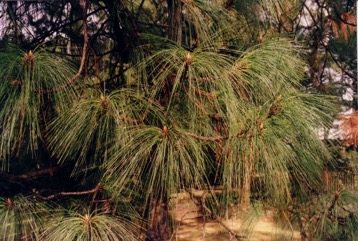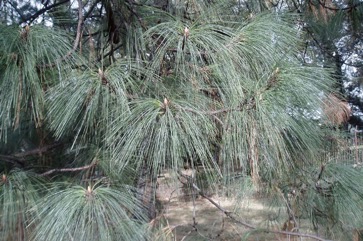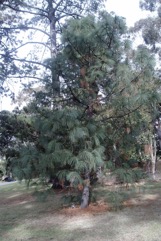Beach Pine, Lodge Pole Pine, Shore Pine

It is a temperate plant. It grows on a wide range of soils. It can grow in wet depressions. It regenerates after fire. Botanical Gardens Hobart. Melbourne Botanical Gardens. It suits hardiness zones 5-9.
Synonyms
- Pinus murrayana Balf.
Edible Portion
- Seeds, Wood, Bark, Gum
Where does Beach Pine grow?
Found in: Argentina, Australia, Britain, Canada, Falklands, Faroe Islands, North America, South America, Tasmania, United States
Notes: There are over 100 species of Pinus.
Growing Beach Pine, Lodge Pole Pine, Shore Pine
Cultivation: The cones can remain unopen of the forest floor for many years. The cones open after fire and the seeds then quickly germinate.
Edible Uses: The needles are used to make tea. The soft inner bark can be eaten. The seeds can be eaten. The gum is chewed.
Production: Seed production begins after 5-10 years and good crops occur every 1-3 years. Trees can live for 200 years.
Nutrition Info
per 100g edible portion| Edible Part | Energy (kcal) | Protein (g) | Iron (mg) | Vitamin A (ug) | Vitamin c (mg) | Zinc (mg) | % Water |
|---|---|---|---|---|---|---|---|
| - | - | - | - | - | - |
Beach Pine, Lodge Pole Pine, Shore Pine Photos



References
Arbor. frutic. brit. 4:2292, figs. 2210-2211. 1838
Brickell, C. (Ed.), 1999, The Royal Horticultural Society A-Z Encyclopedia of Garden Plants. Convent Garden Books. p 800
Coombes, A.J., 2000, Trees. Dorling Kindersley Handbooks p 66
Cundall, P., (ed.), 2004, Gardening Australia: flora: the gardener's bible. ABC Books. p 1047
Esperanca, M. J., 1988. Surviving in the wild. A glance at the wild plants and their uses. Vol. 2. p 154
Etkin, N.L. (Ed.), 1994, Eating on the Wild Side, Univ. of Arizona. p 72
Farrar, J.L., 1995, Trees of the Northern United States and Canada. Iowa State University press/Ames p 60
Harris, E & J., 1983, Field Guide to the Trees and Shrubs of Britain. Reader's Digest. p 248
Hedrick, U.P., 1919, (Ed.), Sturtevant's edible plants of the world. p 497
Lord, E.E., & Willis, J.H., 1999, Shrubs and Trees for Australian gardens. Lothian. p 86
Moerman, D. F., 2010, Native American Ethnobotany. Timber Press. p 404
Plants for a Future database, The Field, Penpol, Lostwithiel, Cornwall, PL22 0NG, UK. http://www.scs.leeds.ac.uk/pfaf/
Porsild, A.E., 1974, Rocky Mountain Wild Flowers. Natural History Series No. 2 National Museums of Canada. p 38
Stubbs, R. D., 1966, An investigation of the Edible and Medicinal Plants used by the Flathead Indians. MA thesis University of Montana. p 57
Turner, N. J., 1988, Ethnobotany of Coniferous Tress in Thompson and Lillooet Interior Salish of British Colombia. Economic Botany 42(2) :177-194
Turner, N., et al, 2011, "Up on the Mountain": Ethnobotanical Important of Montane Sites in Pacific Coastal North America. Journal of Ethnobiology 31(1): 4-43
Upson, R., & Lewis R., 2014, Updated Vascular Plant Checklist and Atlas for the Falkland Islands. Falklands Conservation and Kew.